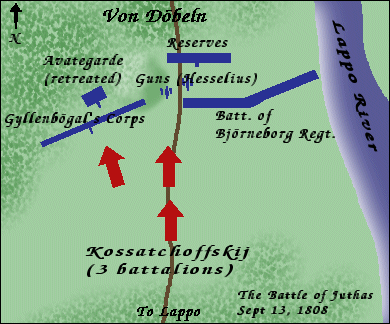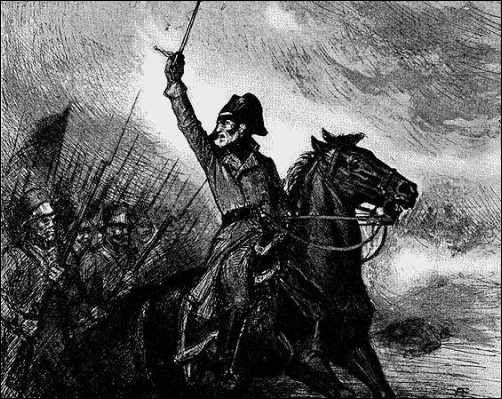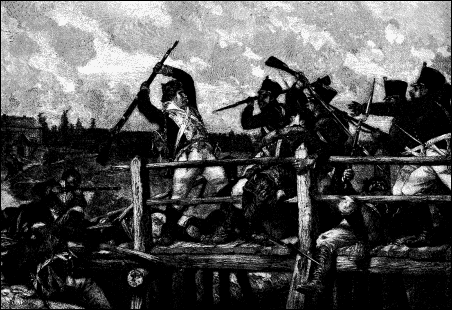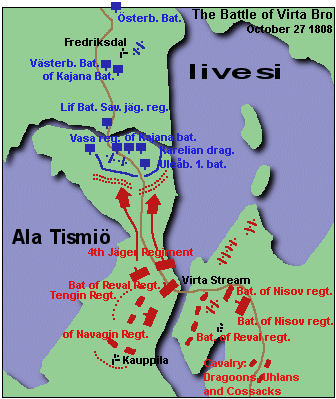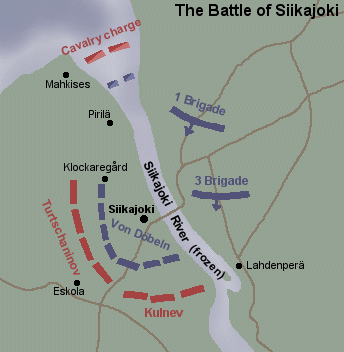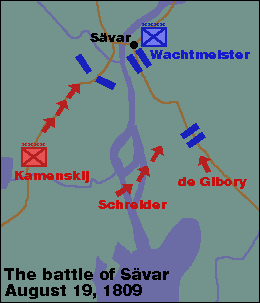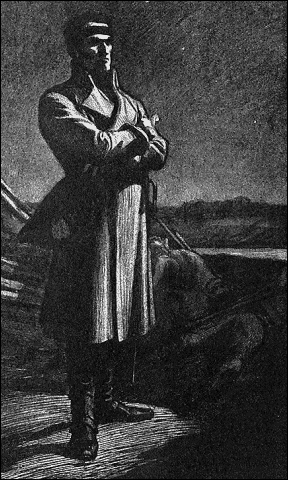SORRY IT'S 1808-09
"Picture from the war"
I found some info and thought,-Why don't Post it
Battle of oravais
In the late summer, early autumn of 1808, it stood clear that the Swedish summer offensive had failed, and Adlercreutz with the main army was moving north, away from the Russians, who were efficiently following under Kamenskij. At Oravais Adlercreutz found splendid positions for defence, and here planned to cause the Russians some damage and delay their advance. The initial Swedish plan was therefore only to give a smaller action at Oravais. The great decisive battle that was to be fought had not been planned for at all.
On September 13th, gunfire was heard from the north. This came from Juthas, where von Döbeln was fighting a Russian force under Kossatchovskij that had tried to go around and surround the entire Swedish army. Juthas was a Swedish victory. The night between the 13th and 14th, the Swedish army camped in their positions at the village of Oravais, and the advance guard was deployed further south, at Lillträsket. It was here that the first fighting was to be done.
At about 5.00 in the morning on September 14, 1808, the silence of dawn was broken by the sporadic gunfire that came from the outpost. The Russian advance guard was already attacking the outpost troops, of the Helsinge regiment, that were posted on the road south of the main position. The Russians, led by the legendary cavalry officer Jakov Petrovitj Kulnev, threw the Swedish outposts back after some intense fighting near Lillträsket, whereas the Swedish after having defended themselves for hours, withdrew to the main position. It was at this initial fighting that the young Swedish artillery officer Wilhelm von Schwerin was mortally wounded as he was defending the bridge with his battery. von Schwerin gets some praise in Fänrik Stĺls Sägner.
During the whole time the fighting was done at Lillträsket, the bulk of the Swedish army waited calmly at the main positions. But as Russian reinforcements were now arriving, and the Swedish advance guard had retreated, Kulnev advanced on the strong main position that Adlercreutz had prepared. This was about 10.00 in the morning.
The Russian 3rd Jäger regiment was deployed just north of the road, while the Sevsk regiment stood south of it. The Petrovsk and Perm regiments were deployed further south. The Swedish had lined up at the forest (below called the main position) and even prepared old barns as simple redoubts. The Swedish reserves stood on the road between the church of Oravais and the main position. The Swedish army numbered about 5.500 troops, while the Russians, successively during the battle, committed 6.000 to 7.000 troops. Interestingly enough, Russian sources speak of a flotilla of Swedish gunboats in the bay, but these are not referred to in Swedish sources. The situation was set and battle was imminent.
"Thousands of rifles opened up fire from both sides of the river... light clouds of gunsmoke lay as a cover over the green fields where skirmishers were crawling like ants... the Russian artillery answered with such a great success that the cannonade may have been the hardest I have yet heard", fänrik Ljunggren who was an eyewitness, later told. Kulnev was now commanding the Russian left, as well as having the overall command, while Demidov was in charge of the right. The fact that Kulnev held the overall command at this stage of the battle is an interesting detail, because in reality Demidov had the higher military rank! Maybe this relationship had been decided on in the name of practicality.
After an intense artillery duel, the Russian infantry advanced. Oh, what a splendid sight! Although Oravais was a small skirmish by continental European standards, all the splendour and colour of the Napoleonic battlefield was present: The men in their flashy uniforms, Russian green advancing straight at the Swedish positions, with shining bayonets and banners fluttering before the wind; sporadic, high commands were heard from the officers, the sounds of thousands of pairs of feet marching to the monotonous beat of the drums. And all this, covered in a layer of gunsmoke. Yes, it must have been a sight!
Karl Von Döbeln at the battle
Phase II of the battle
The first advance bogged down though, and in disappointment over this, Kulnev had troops moved over to reinforce Demodov's right. Demidov immediately went to renewed attack, but also this was countered effectively by the Swedish. At this time, for no apparent logical reason at all and on own initiative, the Swedish Västerbotten's regiment did a disastrous counterattack. They were met with such murderous fire by the Russian guns, that they were turned over in rout. On top of that, the Savolax infantry also joined in the attack, with the same disastrous results. After this, Kulnev again tried to break the Swedish line in a third attempt. To no use. The Russians could not break the Swedish, instead the Russian line was thinned as more and more units were moved over to the right in an attempt to outflank the Swedish.
The situation must have looked very good indeed for Adlercreutz, who was watching the development of the fighting from his command post. The Russian centre was now thin enough for a Swedish counterattack to have disastrous results for the Russian attackers. Straying from his initial plans of defence, Adlercreutz decided on making a counterattack.
At about 2.00 in the afternoon, the Swedish attack began. Adlercreutz' counterattack came swiftly as a surprise for the Russians, and therefore the Swedish initially gained some ground. The Swedes attacked the Russian centre, in the direction of the road. At first, only the battalions of the Västmanlanders and Uppland were involved and they went over the small river at the bridge, but soon the entire Swedish line was in movement against the Russians. The Swedish attack went on with such success that a Russian gun was conquered and the attack reached on all the way to the positions of the initial fighting this day, at Lillträsket. The Russians were now withdrawing before the Swedish attack, but things were to change.
Phase III
The Russian troops retreating, were soon met by fresh, new Russian units, that were arriving on the road from the south. These were the troops led by Ushakov, and Kamenskij himself was riding with these. Kamenskij and Ushakov did not hesitate to bring their fresh troops into battle.
When the Russians came on anew, at about 17.00, ammunition was running low for the Swedish forces. Although brave attempts were made to keep the fighting going, the Swedes had to admit defeat at Lillträsket and retreat back to their initial positions further north. Desperate fighting was done as elements of the Swedish army were trapped behind the Russian lines and had to force themselves out, and back to the main Swedish line, with their bayonets. The battle was still very much undecided as Adlercreutz returned to his position where he had begun the day, but darkness was now falling, making further fighting more and more impossible.
Many historians have criticized Adlercreutz for the disastrous counterattack. Indeed, he played the faith of his entire army on one, as it seems, useless card, at a crucial point in the battle when he knew that the enemy was expecting reinforcements. However, at the time the attack was decided on, the situation looked very good indeed, and a decisive attack, had it succeeded, would have thrown the by Kulnev led lead elements of the Russian army into rout and cut off Demidov from the rest of the army. It might just have ended in a true disaster for the entire Russian army. As it often is in war, the Swedish attack had been a gamble that failed.
Now the Russians had the undisputed initiative. Kamenskij gave order that a new attempt to outflank the Swedish left was to be made, and when this was well in progress, the rest of the Russian army joined in an all-out attack. This was the attack that broke the Swedish army. At about 22.00 in the evening, Adlercreutz decided to retreat north, in the cover of darkness. And the retreat became a spectacle.
"All this time I stood on a nearby hill and watched the horrible play. Towards the evening Jernefelt and I went down to one of the farms, where we intended to spend the night. Then the news that the Swedish army was in full retreat arrived. It became a horrible retreat! The road was tread to pieces. We joined the baggage. It was raining and the darkness was so compact that you could hardly see anything in front of you [...] The Swedish troops, of which soldiers every now and then came through the woods to the baggage, were in total disorder. They had no officers left. The Finnish troops made the rearguard, and were retreating in good order. They did not even have any guns to cover them", Eric Gustaf Ehrström, one of the eyewitnesses tells us about the retreat from Oravais in his diary.
The Swedish army lost more than 1.200 in dead, wounded and POW's in the battle, and the Russians lost about 900 men. The strategic effects of the Swedish defeat were immediate and enormous. The defeated army had to retreat further north, and soon leave Finland altogether. Oravais was therefore the decisive battle and turningpoint of the entire war. It was indeed a Scandinavian Gettysburg, or – Cannae
Order of Battle
Swedish forces at Oravais: 5500 men
Field Marshal Wilhelm Mauritz Klingspor (commander of the Swedish-Finnish troops in Finland, but left over the command to Carl Johan Adlercreutz at Oravais).
- Swedish main army
gen. Carl Johan Adlercreutz
- Infantry
Upplands reg. 2 bat.
Västmanland reg. 1 bat.
Hälsinge reg. 3 bat.
Västerbottens bataljon 1 bat. Uppland, Hälsinge and Västmanland jaegers 6 companies
Österbottens bataljon 1 bat.
Savolaks inf. reg.(4th brig.) 2 bat.
Savolaks Jaeger reg.(4th brig) 2 bat.
Karelian Jaeger corps(4th brig.)
- Cavalry
Livgardet at horse 2 sqdr.
Karelian dragoon corps 1 sqdr
- Artillery
Six 6-pound guns
One 4-pound Howitzer
- Russian forces at Oravais;
6-7000 men
gen. Nikolaj Kamenskij (Russian commander of the Main Army)
- Advance Guard under J. P. Kulnev
Sevsk musketeer reg. 2 bat.
3. Jaeger reg. 2 bat.
Grodno Hussar reg. 2 sqdr.
Don Cossacks 100 troops
- Troops under N. I. Demidov
Petrovsk musketeer reg. 2 bat.
Perm musketeer reg. 2 bat.
- Reserves under Ushakov
Mogilov musketeer reg. 2 bat.
Lithuania musketeer reg. 2 bat.
25 Jaeger reg. 1 bat.
Grodno hussars 1? sqdr
Polish lanciers reg. 1 sqdr
- Artillery
Colonel Argun's artillerycompany (from 17 artillerybrigade)
Lt. Col. Ziminsky's artillerycompany (from 21 art. brig)
Info from;Göran frilund’s webiste about the war .(all rights reserved)
(Maps by Göran Frilund, after maps on Oravais Historiska Förening's website)
+ REP ME IF YOU ENJOYED THE TEXT
/Carl Von Döbeln










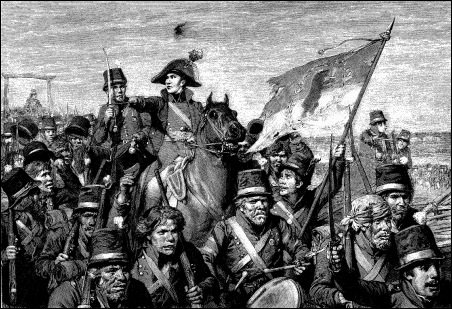
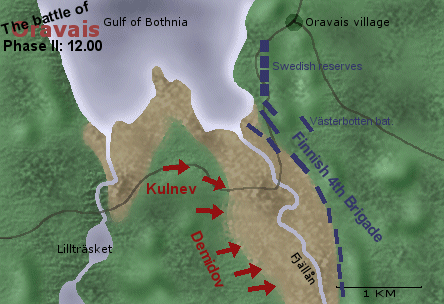
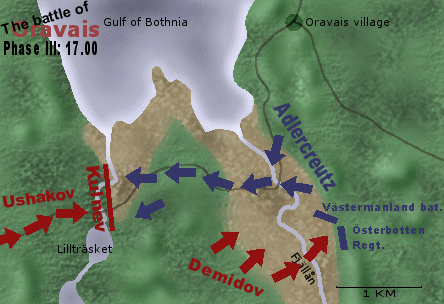

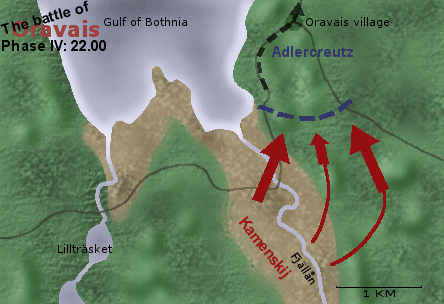


 Reply With Quote
Reply With Quote